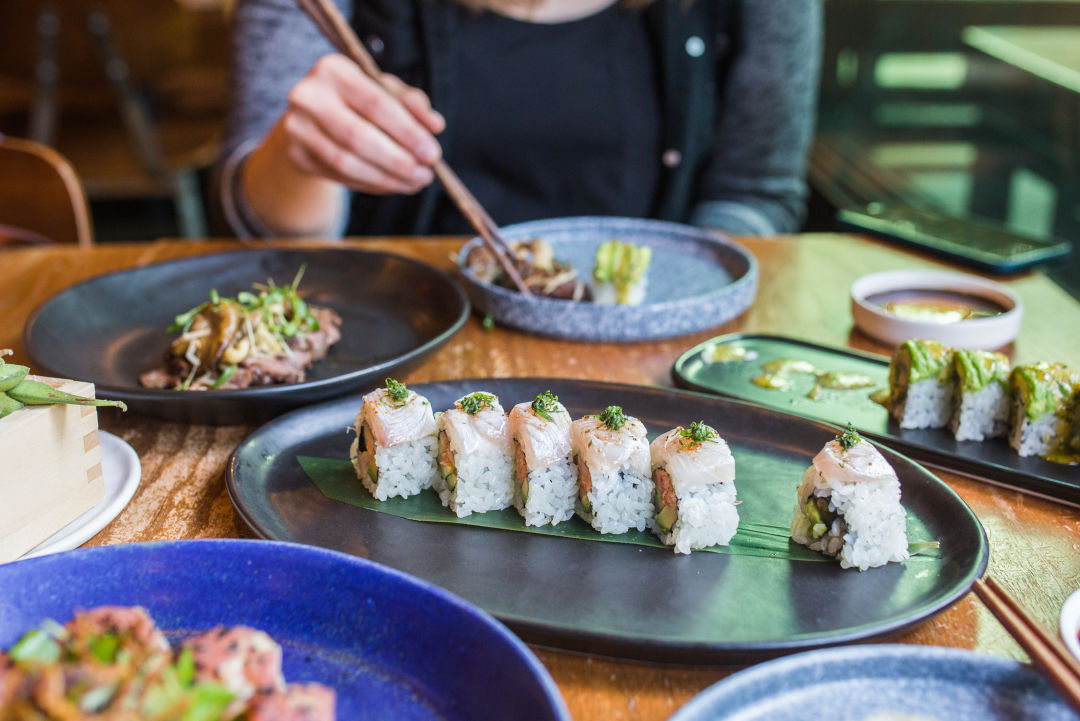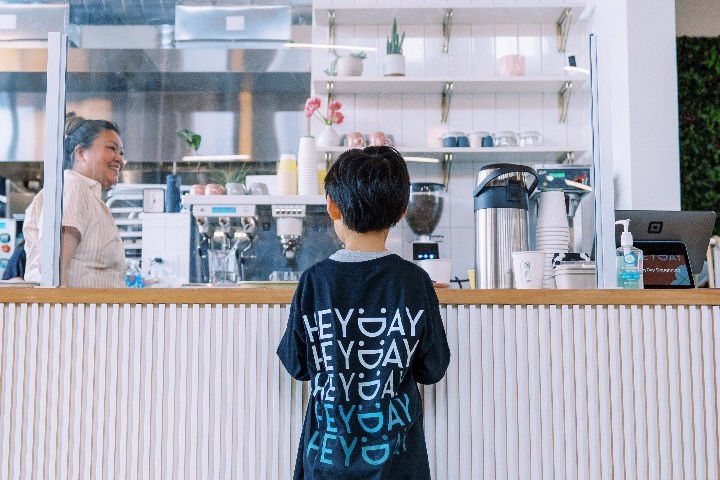Need a Morality Matrix for That Fish? We Got You.

Ask your server more questions—particularly at sustainability-minded restaurants like Bamboo Sushi, above. (Trust us, they’d love it.)
Image: Robin Kim
Check the app
You're at the fish counter, torn between the Atlantic striped bass and Chinese tilapia. No problem: just type both species into Seafood Watch, a free, handy app from the Monterey Bay Aquarium. The enormously comprehensive tool greenlights the bass as an abundant species from a healthy fishery (a.k.a, a defined marine harvest area)—especially if caught by handline. That pond-farmed Chinese tilapia? The little red fish means pass.
Look for the Label
Marine Stewardship Council (MSC) This European research body is like the Encyclopædia Britannica of marine fish: tracking our larger stocks across the globe. A blue MSC label means an item’s fishery has been deemed environmentally sustainable.
Fair Trade USA Want to avoid seafood processed by slave labor? Worried that small fishers are losing out to marine oligarchs? Fair Trade certification—recently expanded to the United States—can reassure you.
Aquaculture Stewardship Council (ASC) A UK-based, MSC-partnered organization provides aquaculture (farmed) certification standards that include both environmental and social impacts. The international certifier has struggled to expand to the United States; one early adopter was Taylor Shellfish in Puget Sound.
Best Aquaculture Practices (BAP) This third-party East Coast auditor looks at the whole aquaculture supply chain, from farms to processors. In the Pacific Northwest, four Pacific Seafood facilities are currently BAP-certified.
James Beard Foundation Smart Catch Program The culinary society lends its name—and administrative support—to help restaurants track purchases against Seafood Watch and the NOAA Fisheries Stock Sustainability Index. In Portland, Bamboo Sushi and the Vitaly Paley empire (Headwaters, Rosa Rosa, Imperial) are “Smart Catch Leaders,” as is the Salmonberry Saloon in coastal Wheeler. (Pictured on our August cover.)
Ask Your Server
“Where was this caught?” Your fishmonger or server should know whether a fish was docked and processed domestically. If it’s American, your chances go up that 1) its fishery is regulated to maintain fish stocks; 2) its chain of custody—from boat to plate—was tracked and inspected; and 3) that it is that fish, not an imposter.
“How was it caught?” Your Seafood Watch app can help decipher the answer to this one. Best harvest methods result in the least disruption of nearby marine environment, and reduce (or eliminate) bycatch like octopus or lingcod. Bottom line: hook-and-line, better; bottom trawling, bad.
“When was it caught?” For wild-caught seafood, seasonality is real. Spring and fall salmon runs are one thing. Then there are migratory species, like late-summer Oregon albacore, that only show up once a year. Commercial seasons are when the state opens a fishery for a limited window. (For Dungeness crab, that’s deepest winter.)
“How was it processed?” The mantra used to be “fresh is best.” But consider, when customers demand “fresh” salmon in February, the pressure is high for a restaurant to lie: to pass farm-raised New Zealand Ōra-King or “previously frozen” chum as a never-frozen fish. These days, flash-freezing or freezing fish instantly at sea can result in dayboat-freshness without the airlift. Even in February.
“How was this farmed fish raised?” Open-system aquaculture farms can pollute rivers, lakes, and coastlines with run-off. Another big risk is escape: farmed fish mixing with delicate wild, native stocks. (There’s a reason why Washington State last year banned Atlantic salmon farms.) Better methods include suspended operations (think clam aquaponics) and closed, recirculating pens and raceways.
“What did this farmed fish eat?” For Brandon Hill at rapidly-expanding Bamboo Sushi, aquaculture is the future of seafood. The challenge, he says, is improving the ratio of food to produce that fish. (Better than chicken, but not 1-to-1.) Aquaculture feed itself can be problematic: full of baitfish that would otherwise sustain ocean fish, as well as Big Ag byproducts and antibiotics. Hill's hoping for more operations like California-based TwoXSea, producer of the world’s first vegetarian-fed farmed fish.




